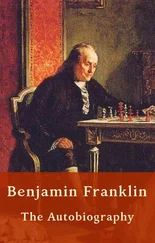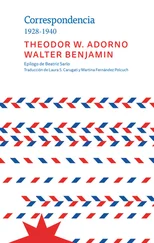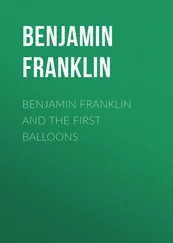In earlier times the Mexican bulldog was used in the nastiest way. It was trained to catch people, tackle them to the ground, and even kill them. During the conquest of Mexico, the Spaniards deployed such dogs against the Indians and one of them, by the name of Bezerillo, became famous, or rather, infamous. It can no longer be said whether or not he was an actual Cuban mastiff, which is considered to be a mongrel of a bulldog and a bloodhound. He is described as medium-sized, red in color, but black around the nose and up to the eyes. His audacity and intelligence were equally extraordinary. He enjoyed the highest status among the dogs and received twice as much food as the others. When on the attack he would hurl himself against swarms of Indians while taking care to lock onto an arm so he could drag away a captive. If they complied, the dog would inflict no further harm; if they refused to accompany him, in a flash he would pin them to the ground and strangle them. He could tell exactly which Indians had capitulated and let them be, focusing instead on the resisters. Although so cruel and so fierce, he sometimes showed himself to be much more humane than his masters. One morning, so the story goes, Captain Jago de Senadza wanted to have a little barbarous fun by letting Bezerillo rip to shreds an old captive Indian woman. He gave her a letter and ordered her to deliver it to the governor of the island; the letter instructed that the dog be let loose on the old woman to rip her apart. When the poor, defenseless Indian woman saw the ferocious dog storming after her, she fell to the ground in fear, desperately begging him for mercy. She showed him the letter, explaining that she had brought it to the commander on orders. The ferocious dog hesitated at these words, and, after a moment’s contemplation, approached the old woman tenderly. This incident astounded the Spaniards, appearing to them as something mystical, or supernatural, which is probably why the governor set the old Indian free. Bezerillo met his end in a skirmish with Caribs, who felled him with a poison dart. It’s easy to see how the unfortunate Indians saw such dogs as four-legged abettors of the two-legged devil. 3
The following story tells of a breed of wild mastiff that roams in packs about Madagascar:
On the island of Madagascar, large hordes of dogs roam wild. Their bitterest enemy is the caiman, which would frequently devour them as they swam from one riverbank to the next. Over the years of struggle against the beast, the dogs have invented a trick that enables them to stay clear of the caiman’s jaws. Before diving into the water, they gather in a large group by the shore and bark as loudly as they can. Drawn to the noise, all the alligators in the vicinity raise their giant heads out of the water just below the spot on the bank where the pack is waiting. At this point the dogs gallop along the bank and then swim across the water unmolested, as the ungainly alligators are not able to keep up. It is also interesting to observe that dogs brought to the island by new settlers fall victim to the caiman, while their offspring later save themselves from certain death by employing the trick invented by the indigenous dogs. 4
We have seen that dogs know how to help one another. Now let’s see how helpful they’ve been to humans. I’m thinking of age-old human activities such as the hunt, the night watch, trekking, war, in all of which dogs have cooperated with humans, spanning various epochs of world history and the most remote corners of the Earth. Some ancient peoples, like those from Colophon, waged wars using great packs of dogs, who would attack first in all their battles. But I’m thinking not only of dogs’ heroism throughout history, but also of their roles in society, and the assistance they give people in countless aspects of everyday life. There is no end to the number of stories, but I will tell only three very short ones, the Boot Dog, the Coach Poodle, and the Death Hound. 5
At the Pont-Neuf in Paris there was a young bootblack who trained a poodle to dip her thick hairy paws in the water and then tread on the feet of passersby. The people would cry out, the bootblack would appear and thereby multiply his earnings. As long as he was busy shining someone’s shoes, the dog behaved, but when the footstool became free, the game would begin anew.
Brehm tells us about a poodle he knew whose intelligence brought great amusement. He was trained in all sorts of things and, in a manner of speaking, understood every word. Whatever his master sent him to fetch, he was sure to deliver what was asked. He would say: “Go fetch a carriage!” and the dog would run to the spot where the cabs wait, jump into a coach and keep barking until the carriage drove off; if the coachman took a wrong turn, the dog began barking again, and in some cases would even run along ahead of the wagon until they reached his master’s home.
An English newspaper reports: In Campbelltown in the province of Argyllshire, every funeral procession, with very few exceptions, makes its way from the church to the cemetery accompanied by a quiet mourner in the form of a huge, black dog. He always takes his place beside those immediately following the casket and escorts the funeral cortege to the grave. Once there, he lingers until the final words of the eulogy have come and gone. With much gravitas he then turns around and exits the graveyard at a solemn pace. This remarkable dog seems instinctively to know when and where a funeral will occur, as he always shows up just at the right moment. Because he has been shouldering this freely chosen obligation for years, his presence has become more or less expected, such that his failure to appear would be conspicuous. At first the dog was always chased from the open grave, his preferred spot to sit, but he would always return to accompany the mourners at the earliest opportunity. Eventually people gave up chasing away the quiet sympathy-bearer, and he has since had an official role in every funeral procession. However, the most remarkable thing was when a chartered steamer pulled into the harbor, carrying a recently deceased man and his attendant mourners: the dog waited right where the ship would dock and then accompanied the funeral procession to the cemetery in his usual way.
Incidentally, did you know there’s an encyclopedia of famous dogs? It was made by a man who busied himself with all sorts of obscure things. For instance, he compiled a lexicon of famous shoemakers, and wrote a whole book titled Soup, as well as other, similarly esoteric works. The dog book is very handy. Every dog known to man is in it, including some that the writer has conceived of himself. It was in this book that I found the wonderful and true story of Medor the dog, who took part in the Paris Revolution of 1831 and the storming of the Louvre, but lost his master there. I’ll tell it to you now in closing, just as its author Ludwig Börne wrote it. 6
I left Napoleon’s coronation for another spectacle that was more after my own heart. I visited the noble Medor. If virtue were rewarded with a title on this Earth, Medor would be the emperor of all dogs. Consider his story. After the storming of the Louvre in July, those who died in the battle were buried in the square in front of the palace, on the side where the delightful columns stand. When the bodies were laid onto carts to carry them to the grave, a dog jumped with heartrending sorrow onto one of the wagons, and from there into the large pit into which the dead were thrown. Great efforts were made to pull him out; he would have been scorched by the scattered lime even before being buried under the dirt. That was the dog people would later call Medor. During battle he always stood beside his master. He was wounded himself. Since his master’s death he never left the graves, moaning day and night before the door to the narrow cemetery, or howling while running back and forth in front of the Louvre.
Читать дальше












